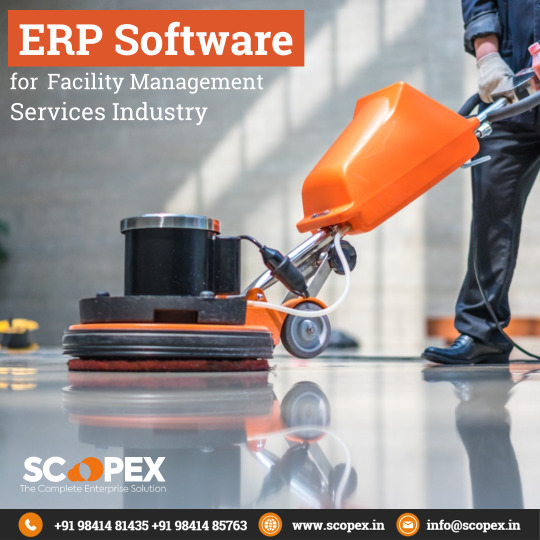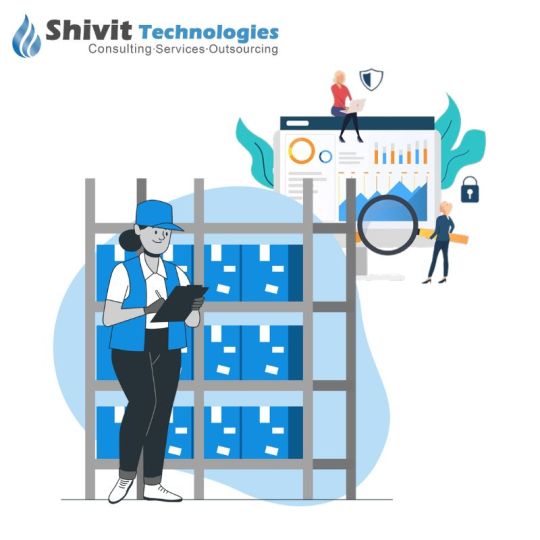#asset maintenance
Text
Let’s explore the critical asset maintenance processes you need to digitalize through a best-in-class mobile maintenance management solution
0 notes
Link
Improved Return on Assets (ROA) achieved through adoption EAM solutions will be driving the demand for enterprise asset management solutions globally....
#adroit market research#asset management#asset management market#enterprise asset management#asset maintenance
0 notes
Text
Daniel Reitberg: Unleashing the Potential of AI in Portfolio Management and Client Enablement

Transforming Portfolio Management through AI Innovation
In the fast-paced world of finance, portfolio management demands cutting-edge strategies and technologies. Daniel Reitberg, an esteemed AI expert, is revolutionizing portfolio management with the power of artificial intelligence (AI). Through AI-driven solutions, Reitberg empowers financial professionals to optimize investment decisions, enhance risk management, and achieve exceptional portfolio performance.
Traditionally, portfolio management relied on manual analysis and subjective decision-making. However, AI has transformed the landscape. Daniel Reitberg's AI algorithms analyze extensive data sets, including market trends, economic indicators, and company financials, with unmatched speed and accuracy. This enables data-driven investment decisions, risk assessment, and real-time opportunity identification.
AI-powered portfolio management systems go beyond data analysis. Reitberg's AI models employ machine learning techniques to generate sophisticated investment strategies. Continuously adapting to market fluctuations, these models uncover patterns, predict market movements, and optimize portfolio allocations. By harnessing AI, financial professionals gain a competitive edge in the ever-changing investment landscape.
Furthermore, AI plays a pivotal role in client enablement and engagement. Reitberg's AI solutions personalize client experiences, tailoring investment strategies to individual goals, preferences, and risk tolerance. Through AI-driven client portals and dashboards, clients gain real-time insights, performance tracking, and interactive reporting, fostering transparency and strengthening client engagement.
Enhancing Client Enablement and Engagement with AI
In client enablement, AI catalyzes exceptional experiences and enduring client relationships. Daniel Reitberg's AI expertise empowers financial professionals to deliver personalized, data-driven interactions that address clients' evolving needs.
AI enables financial professionals to offer personalized investment recommendations and portfolio updates aligned with clients' unique goals and preferences. Reitberg's AI models leverage historical data, market trends, and client-specific information to deliver real-time insights and tailored recommendations. This personalization drives client satisfaction, trust, and long-term relationships.
AI-powered client enablement platforms provide self-service capabilities, empowering clients to access portfolio information, track performance, and explore investment opportunities independently. Reitberg's AI solutions deliver intuitive interfaces, natural language processing, and chatbot functionalities for seamless client experiences and efficient information retrieval.
Additionally, AI-driven analytics enable financial professionals to proactively engage with clients by offering timely advice, alerts, and recommendations based on market conditions and individual factors. With AI, Reitberg transforms financial professionals into trusted advisors, guiding clients through complex financial landscapes and facilitating informed investment decisions.
In conclusion, Daniel Reitberg's pioneering work in AI-driven portfolio management and client enablement is reshaping the finance industry. AI's capabilities in data analysis, investment strategy generation, personalized experiences, and seamless enablement unlock new levels of portfolio performance and client satisfaction. As AI evolves, experts like Daniel Reitberg will continue to shape the future of portfolio management, enabling financial professionals to thrive in a competitive and dynamic market.
#artificial intelligence#machine learning#deep learning#technology#asset#asset management#investment#asset maintenance
0 notes
Text
5 Key Stages of Asset Lifecycle Management and Best Practices

Asset Planning and Acquisition: Effective asset lifecycle management begins with thorough planning and strategic acquisition processes.
Clearly define organizational requirements and objectives to align asset selection with business needs.
Conduct comprehensive market research to identify suitable assets and evaluate their capabilities.
Develop a robust acquisition strategy considering factors such as cost, quality, and long-term maintenance requirements.
Implement streamlined procurement processes and ensure compliance with regulations and internal policies.
Asset Deployment and Commissioning: The proper deployment and commissioning of assets set the stage for efficient operation and maintenance.
Ensure assets are installed and configured correctly, adhering to manufacturer guidelines and industry standards.
Conduct rigorous testing and inspections to verify asset functionality and performance.
Provide comprehensive training programs for staff involved in operating and maintaining the assets.
Establish documentation protocols to record asset deployment details and associated warranties or guarantees.
Asset Operation and Maintenance: Effective operation and maintenance practices are vital to optimize asset performance and maximize its lifespan.
Continuously monitor and assess asset performance using key performance indicators (KPIs) and advanced condition monitoring techniques.
Develop preventive maintenance schedules based on asset-specific requirements and historical data.
Conduct regular inspections, audits, and assessments to identify and address potential issues proactively.
Implement a robust work order management system to efficiently track and prioritize maintenance activities.
Ensure compliance with relevant regulations, standards, and safety protocols during asset operation and maintenance.
Asset Upgrades, Repairs, and Replacements: Planning for asset upgrades, repairs, and replacements are crucial for sustained operational efficiency and cost-effectiveness.
Develop a comprehensive lifecycle plan that includes provisions for upgrades, repairs, and eventual replacements.
Monitor asset health and performance indicators to identify the need for upgrades or repairs.
Conduct thorough cost-benefit analyses to determine the optimal timing for asset replacements.
Follow proper change management procedures to minimize disruptions during upgrades or replacements.
Asset Disposal or Decommissioning: Proper disposal or decommissioning practices ensure responsible asset retirement and minimize environmental impact.
Develop environmentally friendly disposal strategies in compliance with relevant regulations and guidelines.
Identify appropriate disposal methods, such as recycling or resale, to maximize asset value and reduce waste.
Safely remove or dismantle assets, following established safety protocols and industry best practices.
Maintain comprehensive documentation and data management for legal and auditing purposes throughout the disposal process.
Best Practices for Asset Lifecycle Management:
Implement a centralized asset management system to streamline tracking and documentation processes.
Adopt a proactive maintenance approach, leveraging condition monitoring and predictive maintenance techniques to reduce unplanned downtime.
Regularly review and update asset management policies and procedures to reflect industry best practices and emerging technologies.
Foster a culture of asset awareness and accountability throughout the organization, promoting ownership and responsibility among employees.
Collaborate closely with vendors and suppliers to ensure timely support, availability of spare parts, and effective warranty management.
Conduct regular audits and performance evaluations to identify areas for improvement and optimize asset lifecycle management practices.
Remember that these best practices should be tailored to your specific industry, organization, and the assets you manage. Adapt them to suit your unique circumstances and continuously strive for ongoing improvement in your asset lifecycle management processes.
Don't let asset maintenance be a roadblock to your business growth. Embrace Cryotos Asset Maintenance Management Software and unlock the true potential of your assets. Maximize efficiency, minimize downtime, and stay one step ahead of maintenance challenges. Experience the power of automation and take control of your asset management today!
Visit our website or contact us for a personalized demo and discover how Cryotos CMMS Software can transform your asset maintenance processes. Embrace the future of asset management with Cryotos!
#cmms#cmms software#asset maintenance#asset management software#asset lifecycle management#asset lifecycle#assets#asset management
1 note
·
View note
Photo

Pilot project hopes to transform Morocco’s waste management sector
The EIB has announced technical assistance to improve organic waste management for the municipality of Chefchaouen in Morocco.
https://www.esi-africa.com/north-africa/pilot-project-hopes-to-transform-moroccos-waste-management-sector/?utm_source=rss&utm_medium=rss&utm_campaign=pilot-project-hopes-to-transform-moroccos-waste-management-sector
#Asset Maintenance#News#North Africa#Africa#Circular economy#EIB#environmental sustainability#Morocco#Waste management#Yunus Kemp#ESI-Africa.com
0 notes
Text
How To Make Your Field Inspections Quick and Easy
Field assets in large facilities such as power plants, large buildings and factories require in-person visual inspection at regular intervals ranging from a few weeks to a few months. In the last few years, the increased frequency of failures caused by ageing assets and rapid industrial growth has increased the frequency of Field Inspection. However, with the growing in number of inspections – the drastic increase in maintenance cost of human resources cannot be ignored Field Service Management.
Inspectors and auditors often visit remote locations. The equipment they need to inspect can be quite complex. Therefore, inspection done right is of paramount importance. Failure to take care in this area could lead to financial penalties with the business. Traditional paper-based inspection workflows require them to fill numerous forms, make notes, check progress and document data. This process can be inefficient and time-consuming. It can also be highly prone to manual errors. Faulty entry of inspection data could have health and safety implications which can be even more troublesome Field Inspection digital field service management.
To address this concern, the field inspection industry must harness the power of digital technology given widespread use of mobile and tablets today. An integrated system to ensure timely and scheduled field inspections is the need of the hour Field Service Management digital field service management.
Quick, user-friendly and integrated platform for capturing data efficiently Field Operations
The field representative should be able to capture and share data from any location from smartphones and tablets. The platform should work offline in areas with weak or no signal so that data can sync once the device gets signal. This will facilitate field workers to work with speed and accuracy Field Operations.
Paperless documentation to maintain timely records Asset Maintenance
Personalized inspection forms that are easily configurable on mobile devices is one of the most important features that can fill the gap between field representatives and the back office. Forms should be easy to fill with objective options such as checkboxes, radio buttons, and auto-suggest features for long sentences to minimize typing Field Service Automation. This saves the organization from tons of paperwork which costs a fortune and thus affects the productivity adversely.
Configurable inspection workflow to handle documentation efficiently field service applications
The platform should effortlessly configure and adapt to the inspection workflow, such as signing off audits with a digital signature and tracing inspection actions based on your specs. The dashboard can also be configured to view necessary reports to make informed decisions.
Collaboration feature to communicate effectively
Field representatives can use the collaboration feature to share accurate, real-time information and updates across sites to all registered users. It can also be used to send inspection requests directly to field representatives who can view details and perform the necessary inspection.
Capturing photos and videos easily field service applications
Field inspectors and auditors often deal with complex equipment/parts at site locations. Capturing information through photos and videos while inspecting in the field minimizes data loss and provides detailing that a traditional paper-based system cannot match.
Speech to text capability Field Service Automation
Built-in dictation technology that converts spoken words to digital text can be extremely beneficial for the field personnel during the inspection.
Conclusion Digital Field construction solutions
Hence, in a nutshell, a disruptive mobile field inspection platform that has the capability to deliver all-in-one, simplified, real-time digital field experience can prove to be a gamechanger for field operations. A unique solution like this can reshape field inspection processes by transforming the capturing, visualization and communication of inspection data to enable business continuity anywhere, anytime Digital Field construction solutions.
#Field Service Management#Field Operations#Asset Maintenance#field service applications#Field Service Automation#Digital Field construction solutions#digital field service management#Field Inspection
0 notes
Link
This market is primarily driven by the inclination of companies towards controlling cost with lesser maintenance and procurement expenses.
#adroit market research#asset management#asset management market#enterprise asset management#asset maintenance
0 notes
Link
Improved Return on Assets (ROA) achieved through adoption EAM solutions will be driving the demand for enterprise asset management solutions globally. North America is leading Enterprise Asset Management (EAM) market as most of the key market players are present in the USA
#adroit market research#asset management#asset management market#enterprise asset management#asset maintenance
0 notes
Text
One of the main objectives of predictive maintenance is to eliminate all potential issues so that future asset failure chances are reduced. In predictive maintenance, the maintenance frequency is minimized without letting assets fail so that maintenance cost is decreased.
Predictive maintenance utilizes asset maintenance data & history to detect in advance when asset failure can occur, and maintenance is provided before failure. Moreover, real-time information and asset conditions are checked regularly.
In simple terms, predictive maintenance is proactive maintenance that ensures assets do not fail and provides maintenance on time before asset failure. So that asset maintenance expenses are decreased, and asset uptime & performance is increased. It makes assets more reliable & decreases downtime.
Predictive maintenance is an essential part of maintenance management software. It helps organizations in several ways, specifically in maintenance management. If you want to utilize predictive maintenance, then investing in asset management software is important.
Explore More: Predictive Maintenance Challenges
#Predictive Maintenance Challenges#asset maintenance#proactive maintenance#maintenance management software#asset management software#asset tracking#asset tracking system
0 notes
Photo

Best Facility Management Software | Best Software for Facility Management
#best software for facility management#fm software#facility maintenance software#facility management app#property management software#best facility management software#Asset Management
2 notes
·
View notes
Text
Asset Performance Management through Life
Asset Performance Management through Life
Abstract: The use of the terms Reliability (R) and Maintainability (M) are now in vogue. Does improvement in Reliability and Maintainability (R&M) relate to Maintenance Optimisation or Asset Optimisation? In this paper we would examine whether such a relationship exists. We would also explore whether the DOM (Design Out Maintenance) strategy can be effectively employed in improving Reliability…
View On WordPress
#Asset#Asset Management#Asset Performance#Design#Design Out Maintenance#Life Cycle Cost#Maintenance#reliability
2 notes
·
View notes
Text

iDataOps our machine monitoring software fetches the data generated at an equipment level and monitors equipment with predictive maintenance, preventive maintenance and OEE.
#machine monitoring software#predictive machine maintenance#preventive maintenance#asset maintenance management
0 notes
Link
Improved Return on Assets (ROA) achieved through adoption EAM solutions will be driving the demand for enterprise asset management solutions globally....
#adroit market research#asset management#asset management market#enterprise asset management#asset maintenance
0 notes
Text
Cost Effective Inventory System in Noida & Delhi NCR India
Cost Effective >> Inventory System in Noida & Delhi NCR India

Are you a small business owner in Delhi NCR India? Do you find yourself struggling to keep track of your inventory and streamline your operations efficiently? Look no further! Our cloud-based ERP solutions are designed specifically to cater to businesses like yours, offering advanced features to revolutionize your inventory management processes.
As a leading ERP software development company based in Noida India, we understand the unique challenges faced by small businesses when it comes to inventory tracking. Our ERP software is tailored to address these challenges, providing real-time visibility into your inventory and empowering you to make quick, informed decisions.
Let's dive into some key features and modules of our ERP software:
1. Inventory Management Module:
- Get up-to-date information about your stock levels.
- Set up automated alerts and reorder points to prevent stockouts.
- Easily handle inventories in several locations or warehouses.
2. Purchase Order Management:
- Create, track, and manage purchase orders efficiently.
- Maintain a centralized database of suppliers and track their performance.
3. Sales Order Management:
- Automate order processing workflows to speed up operations.
- Manage customer information and interactions for enhanced satisfaction.
4. Financial Management:
- Maintain a comprehensive ledger of all financial transactions.
Simplify payment processing, collections, and invoicing.
5. Reporting and Analytics:
- Design dashboards that can be customised for data visualisation in real time.
- Utilize advanced analytics tools to identify trends and forecast demand.
6. Scalability and Customization:
- Scale your ERP system as your business grows.
- Customize the software to meet your specific business requirements.
With our inventory tracking software in Delhi, you can bid farewell to manual processes and embrace automation and accuracy. Our cloud-based ERP solutions ensure that you always have the right products on hand when you need them, helping you avoid costly mistakes and inefficiencies.
Inventory tracking software, Inventory management software, ERP software development company, Cloud-based ERP software, ERP modules, Cost-effective inventory system
#erp software development company#inventory management#shivit#erp#cloud erp#manufacturing erp software#crm for water businesses#asset maintenance in water industry#centralized data for water businesses#compliance in water management
0 notes
Text

Effective Maintenance Work Scheduling Process & Your CMMS.
Ensuring the proper and efficient maintenance of all facilities and equipment is a crucial part of running a heavy industrial, high-risk business.
If maintenance tasks are carefully planned, scheduled, and approved by a review team prior to being assigned to your maintenance team, they will be safer and more efficient. Naturally, not all maintenance can be arranged in advance, since malfunctions do happen.
Better production planning is made possible by an effective maintenance schedule, which guarantees that maintenance tasks are finished during prearranged downtime intervals. This allows businesses to allocate resources more wisely.
Creating an approved list of tasks for the maintenance crew to finish over a predetermined amount of time is the process of scheduling maintenance work.
A select group of important business stakeholders approve the schedule, which is typically the last stage of the work scheduling process.
The list of tasks that need to be scheduled should only contain work orders that are fully planned. This guarantees that all labour, specialised tools, equipment, and other resources like scaffolding, access platforms, cranes, elevated work platforms, and scissor lifts are verified during the scheduling approval process.
A typical compliance objective is for the maintenance team to finish 85% or more of the work in its entirety and in accordance with specifications; the likelihood of this happening increases with the quality of the approved work schedule.
To learn more and read this article in full, here is the link
#maintenance work scheduling#work scheduling#maintenance scheduling#cmms functionality#scheduling weekly work#asset management plans#better work scheduling
0 notes
Text
The Role of Computerized Maintenance Management Systems in Streamlining Industrial Operations

In today’s hyper-competitive business ecosystem, even a minute of downtime translates to lost productivity, increased costs, and potential safety hazards. To streamline their operations and stay competitive, industries are increasingly turning to Computerized Maintenance Management Systems (CMMS). Let's delve into how CMMS software plays a pivotal role in optimizing maintenance processes and enhancing productivity in industrial settings.
Understanding Computerized Maintenance Management Systems
Computerized Maintenance Management Systems are powerful tools designed to facilitate the planning, execution, and tracking of maintenance activities within an industrial set up. Unlike traditional paper-based or spreadsheet methods, CMMS software centralizes maintenance data, providing real-time insights into equipment health, work orders, and resource allocation.
Preventive maintenance: Proactive approach to equipment reliability
One of the key functionalities of CMMS solutions lies in their ability to implement preventive maintenance schedules. By scheduling routine inspections, servicing, and repairs based on equipment usage or predefined intervals, industrial facilities can proactively address potential issues before they escalate into costly breakdowns.
For instance, in a manufacturing plant, CMMS software can automatically generate work orders for regular equipment checks, lubrication, or calibration. This proactive approach not only minimizes unplanned downtime but also extends the lifespan of critical assets, ultimately reducing maintenance costs.
Asset management: Optimizing resource utilization
Industrial facilities house a multitude of assets, ranging from machinery and vehicles to tools and infrastructure. Managing these assets efficiently is essential for maximizing productivity and minimizing operational disruptions. Asset maintenance management software provides a centralized repository for asset information, including maintenance history, specifications, and warranty details.
With cutting-edge CMMS solutions on hand, maintenance teams can easily track the performance and status of each asset, enabling informed decision-making regarding repairs, replacements, or upgrades. Furthermore, predictive maintenance features within advanced CMMS platforms leverage data analytics and machine learning algorithms to forecast equipment failures, allowing organizations to take pre-emptive actions to avoid downtime.
Work order management: Streamlining maintenance processes
In a bustling industrial environment, managing work orders manually can be a logistical nightmare. CMMS software automates the entire work order lifecycle, from creation and assignment to completion and documentation. Maintenance technicians can access work orders via mobile devices, allowing them to view task details, record findings, and update job status in real-time.
Moreover, CMMS streamlines communication between maintenance teams, supervisors, and other stakeholders by providing a centralized platform for collaboration. This fosters transparency and accountability, ensuring that maintenance tasks are executed promptly and efficiently.
Data-driven decision making: Insights for continuous improvement
In the digital age, data is king. CMMS software empowers industrial facilities with actionable insights derived from maintenance data. By analyzing key performance indicators such as Mean Time Between Failures (MTBF), Mean Time to Repair (MTTR), and Overall Equipment Effectiveness (OEE), organizations can identify trends, pinpoint areas for improvement, and optimize maintenance strategies.
For example, by analyzing maintenance data, a chemical plant may discover that a particular pump consistently fails after a certain number of operating hours. Armed with this knowledge, the plant can adjust its preventive maintenance schedule or invest in upgrading the pump to a more robust model, thereby minimizing disruptions to production.
Eagle CMMS – Powering your plants with innovative maintenance management systems
Computerized Maintenance Management Systems stand as the linchpin for operational excellence in industrial settings, driving efficiency, reliability, and competitiveness. By embracing CMMS solutions like Eagle CMMS, organizations embark on a transformative journey from reactive to proactive maintenance, empowered to navigate the complexities of modern industry with confidence.
Eagle CMMS transcends mere software; it emerges as a strategic ally committed to maximizing maintenance efficiency and reliability. Through proactive maintenance strategies, optimized asset management, and streamlined work order processes, Eagle CMMS empowers businesses to minimize downtime, reduce costs, and maintain a competitive edge in today's fast-paced market.
Moreover, our dedication extends beyond software provision. We prioritize comprehensive training, unwavering support, and continuous enhancements to ensure that Eagle CMMS remains at the forefront of industry innovation. With Eagle CMMS as your trusted partner, you're not just investing in software; you're fortifying your business for sustained success and resilience in the ever-evolving landscape of industry.
As technology continues to evolve, CMMS software like Eagle CMMS will remain an indispensable tool for achieving operational excellence and plant wellness. Choose Eagle CMMS and embark on a path toward operational excellence, where every step is guided by innovation, reliability, and commitment to your success.
To learn more visit our website or sign up for a free 14-day trial.
0 notes